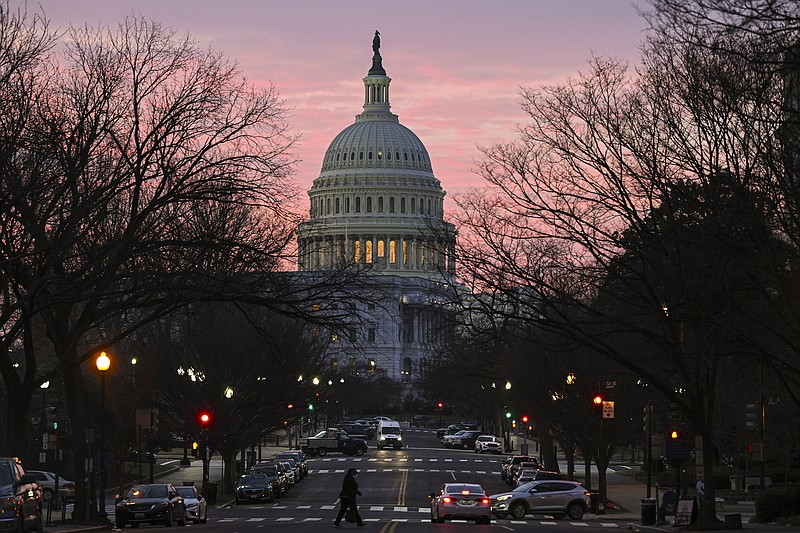Washington's favorite show, "Debt Ceiling Chicken," is playing again in the big white theater on Capitol Hill. And once again, it is diverting attention from the fact that the United States really does have a debt problem.
Republicans and Democrats in recent decades have hewed to a kind of grand bargain, raising spending and cutting taxes, and papering over the difference with a lot of borrowed money.
From 1972 to 2021, the government, on average, spent about 20.8% of gross domestic product while collecting about 17.3% of GDP in revenue. It covered the gap with $31.4 trillion in IOUs -- the federal debt.
The government relies on this borrowed money to function, and for decades, it has defied a variety of dire predictions about the likely consequences. Notably, there's no sign that Washington is exhausting Wall Street's willingness to lend. In financial markets, U.S. Treasurys remain the ultimate comfort food. There's also little evidence the government's gargantuan appetite is making it harder for businesses or individuals to get loans, which could impede economic growth.
But the federal debt still carries a hefty price tag.
Raising the ceiling ought to be a formality, since it simply allows the government to meet the obligations Congress already has approved. But House Republicans say they won't raise it without a deal to cut future spending.
Americans don't want large spending cuts. The vast majority of federal spending is supported by most Americans. About 63 cents of every federal dollar goes to mandatory programs, the largest of which, Social Security and Medicare, are wildly popular. Others, like Obamacare subsidies, are less popular, but there's no need to speculate about what would happen if Republicans tried to cut the program. They've tried and failed repeatedly. An additional 15 cents goes to discretionary programs. The big-ticket items, like health care for veterans, highway construction and subsidies for law enforcement, are pretty popular, too. The rest is the defense budget and interest payments.
Democrats ought to emphasize a distinction between resisting Republican demands and defending the government's current borrowing habits. There is another, better way to fund public spending: collecting more money in taxes.
In recent decades, proponents of more spending have largely treated tax policy as a separate battle -- one that they've been willing to lose.
They need to start fighting and winning both.
It costs money to borrow money. Interest payments require the government to raise more money to deliver the same goods and services. Using taxes to pay for public services means that the government can do more.
The United States paid $475 billion in interest on its debts last fiscal year, which ran through September. That was a record, and it will soon be broken. In the first quarter of this fiscal year, the government paid $210 billion.
The payments aren't all that high by historical standards. Measured as a share of economic output, they remain well below the levels reached in the 1990s. Last year, federal interest outlays equaled 1.6% of GDP, compared with the high-water mark of 3.2% in 1991. But that mark, too, may soon be exceeded. The Congressional Budget Office projects that federal interest payments will reach 3.3% of GDP by 2032, and it estimates interest payments might reach 7.2% of GDP by 2052.
That's a lot of money that could be put to better use.
If the debt ceiling serves any purpose, it is the occasional opportunity for Congress to step back and consider the sum of all its fiscal policies.
The nation is borrowing too much but not because it is spending too much.
The real crisis is the need to collect more money in taxes.
The New York Times
